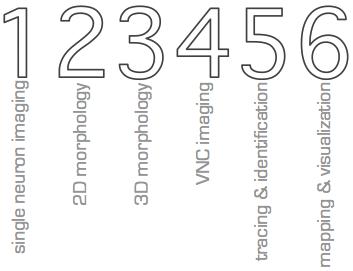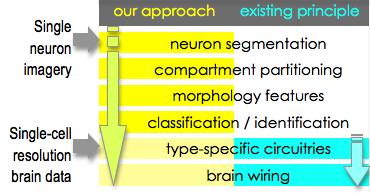
sponsored by the National Science Foundation, Directorate of Biological Sciences (ABI program, DBI)
CAREER: Modeling the Structure and Dynamics of Neuronal Circuits in the Drosophila larvae using Image Analytics
ABI Innovation: Modeling the Drosophila Brain with Single Neuron Resolution using Computer Vision Approaches

